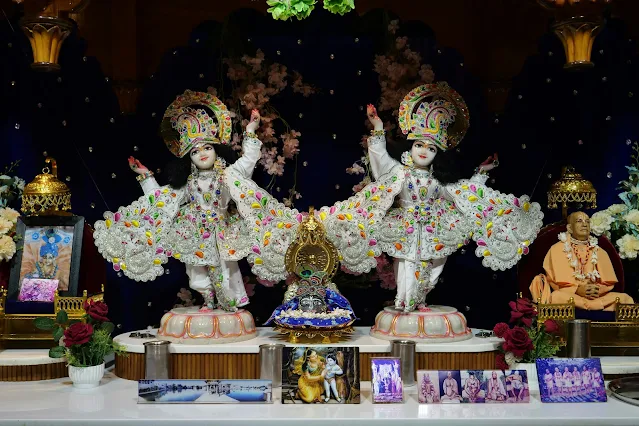Janmashtami Puja: A Detailed Guide
Janmashtami Puja: A Detailed Guide
Introduction: Janmashtami, also known as Krishna Janmashtami or Gokulashtami, is a Hindu festival that celebrates the birth of Lord Krishna, the eighth avatar of Vishnu. This auspicious occasion usually falls on the eighth day (Ashtami) of the Krishna Paksha (dark fortnight) in the month of Bhadrapada (August-September) according to the Hindu lunar calendar. Janmashtami is celebrated with great devotion and enthusiasm across India and by Hindu communities around the world. The day is marked by fasting, singing devotional songs, preparing special dishes, and performing the Janmashtami Puja.
Significance of Janmashtami Puja: Janmashtami Puja holds immense significance in Hinduism as it is believed to invoke the blessings of Lord Krishna. The puja is performed to celebrate the divine birth of Krishna, who is revered as a symbol of love, wisdom, and righteousness. Devotees believe that worshipping Krishna on this day helps in attaining spiritual growth, protection from negative forces, and overall well-being.Preparations for Janmashtami Puja:
1.
Cleaning and Decoration:
o Thoroughly clean the house and the
area where the puja will be conducted.
o Decorate the puja area with flowers,
rangoli, and lights. Traditional decorations like mango leaves and torans are
commonly used.
o A small cradle or 'jhoola' is
prepared for Lord Krishna’s idol, symbolizing his birth.
2.
Puja Items Required:
o An idol or image of Lord Krishna (as
a child, also called 'Laddu Gopal').
o A cradle or 'jhoola' for the idol.
o Puja thali with essential items like
roli (red vermilion), rice grains, incense sticks, diya (oil lamp), flowers,
and fruits.
o Panchamrit (a mixture of milk,
yogurt, honey, ghee, and sugar) for abhishekam (ritual bathing).
o Tulsi leaves, which are considered
sacred to Lord Krishna.
o Offerings like butter (Krishna’s
favorite), sweets, fruits, and milk products.
o New clothes and jewelry for the
deity.
3.
Fasting:
o Many devotees observe a fast on
Janmashtami, which is broken after midnight when Lord Krishna is believed to
have been born.
o The fast can be nirjala (without
water) or phalahar (fruits and milk only), depending on personal preference and
health.
Performing Janmashtami Puja:
1.
Kalash Sthapana:
o Place a kalash (pot) filled with
water in the puja area, symbolizing the presence of Lord Vishnu.
o Cover the kalash with a coconut and
decorate it with mango leaves.
2.
Invocation (Aavahan):
o Begin the puja by invoking Lord
Ganesha to remove any obstacles.
o Chant the necessary mantras and
invite Lord Krishna to accept the puja.
3.
Abhishekam (Ritual Bathing):
o Bathe the idol of Lord Krishna with
Panchamrit, followed by clean water.
o Wipe the idol with a clean cloth and
dress it in new clothes and ornaments.
o Place the idol in the decorated
cradle.
4.
Offering Prayers and Mantras:
o Light the diya and incense sticks.
o Offer flowers, Tulsi leaves, and
fruits to the deity while chanting Krishna mantras, such as the "Om Namo
Bhagavate Vasudevaya" or "Hare Krishna" mantra.
o Perform the Krishna Aarti, singing
devotional songs and hymns dedicated to Lord Krishna.
5.
Swinging the Cradle:
o Gently swing the cradle with the idol
of Krishna, symbolizing his birth.
o Sing lullabies or bhajans,
celebrating the arrival of the divine child.
6.
Naivedya (Offering of Food):
o Offer the prepared sweets, butter,
and other food items to the deity.
o Break the fast after offering the
Naivedya and distribute the Prasad (consecrated food) among family members and
devotees.
7.
Midnight Celebrations:
o As Janmashtami is believed to be the
time of Krishna’s birth, the climax of the puja is observed at midnight.
o The moment of Krishna’s birth is
marked with the blowing of conch shells, ringing of bells, and loud chants of
“Krishna Janmotsav Ki Jai.”
o Devotees break their fast and
celebrate with joy and enthusiasm.
Conclusion: Janmashtami Puja is not only a ritualistic observance but also a way to connect with the divine. It embodies the spirit of devotion, love, and surrender to Lord Krishna. By performing this puja, devotees seek Krishna’s blessings for a life filled with happiness, peace, and spiritual fulfillment. Whether at home or in temples, the celebrations of Janmashtami bring people together in a shared experience of joy and reverence.




No comments